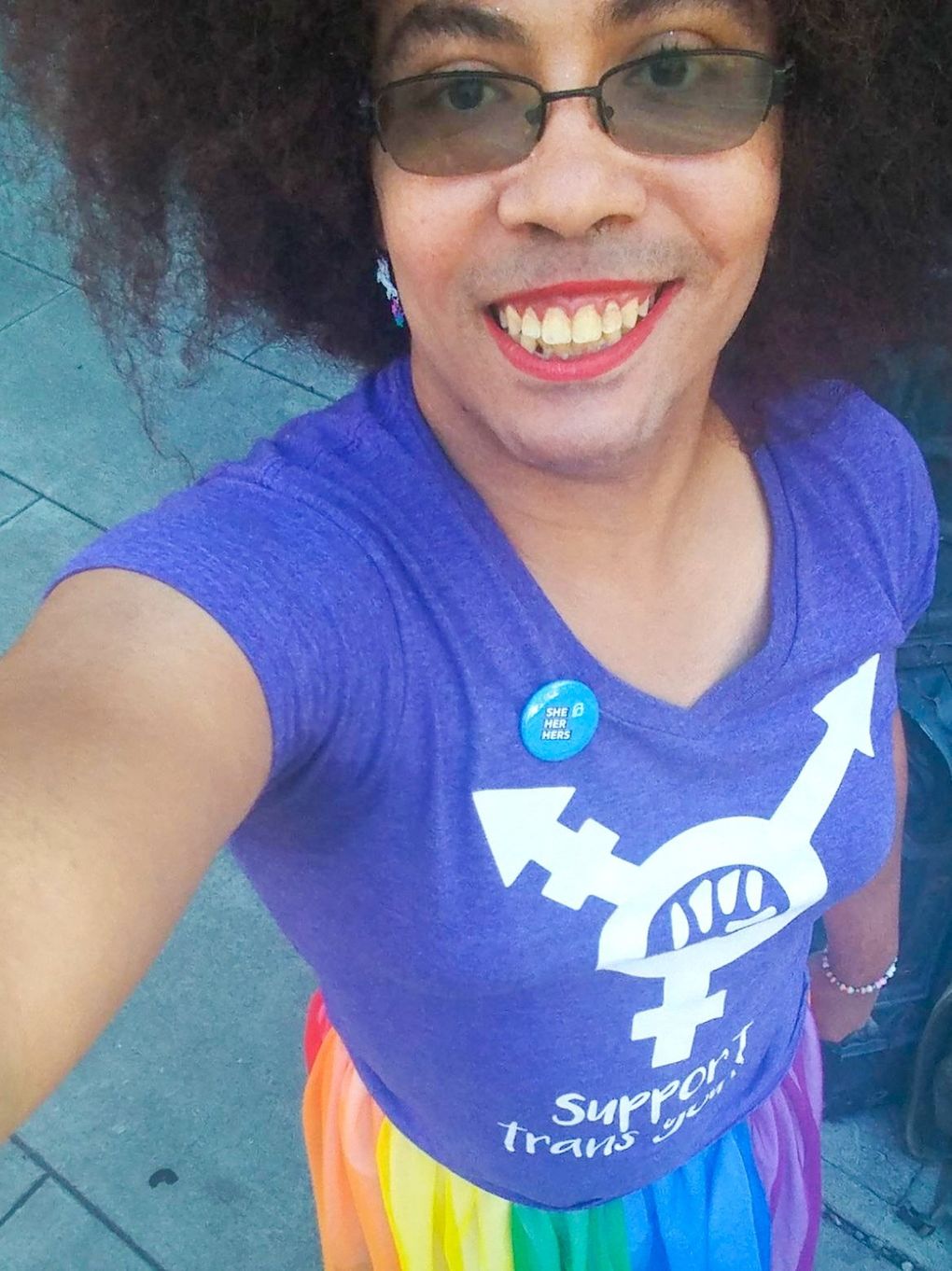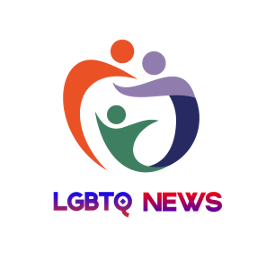June in Seattle is habitually accompanied by the colors of the rainbow adorning street corners and the windows of restaurants, cafes and stores, and many activities celebrating Pride. This year, Seattle Pride, which in recent years has been the main Pride event in the city, will once again be virtual, taking place with performances, panels and more June 26-27. Other Pride events, organized by a range of organizations, take place throughout the month.
But just because some Pride events in Seattle will be virtual doesn’t make Pride any less meaningful. Here, longtime members of the LGBTQ+ community (LGBTQ+ stands for lesbian, gay, bisexual, transgender and queer/questioning, with the + denoting everything along the gender and sexuality spectrum) reflect on the memories of past Pride events and how the month has metamorphosed into modern Pride, while newer members of the community share how Seattle Pride has helped them feel seen, accepted, proud.
Lamar Van Dyke and Rita Smith
Lamar Van Dyke’s first Seattle Pride was in 1980, and she went on to emcee the Dyke March for 20 years. She also ran Dykes on Bikes, who circumnavigate Pride parades on their motorcycles, ensuring the marches reach their destinations. “We would make our way up Broadway making these big loops,” said Van Dyke, 74. “Waving to people and acting crazy and having fun.”
Seattle Pride (and the celebration of Pride in general) has always been a day where, in Van Dyke’s words, one could say a particular four-letter expletive to everything, “and be as gay as you wanted and go to the parade.”

The first Seattle Pride that Rita Smith, 77, attended was in 1978, when she recalls the parade coming to a joyous end in Pioneer Square. Over the years, she has watched the procession wind from Capitol Hill to the skyscrapers of Fourth Avenue downtown. But both Smith and Van Dyke noted the subtle shift in Seattle Pride after it moved from its longtime home on Capitol Hill in 2006.
“The participation element has become way more accepted and middle of the road. Pride used to be a time to just act up,” said Van Dyke, who plans to attend neighborhood Pride events that she says still have that “just act up” spirit to them.
Smith described the move as being full of irony: As the parade became more mainstream, “which is one of the points of being out there, to have the larger community get used to that and accept us and embrace us,” one cannot ignore the carnival-like sense many Pride celebrations now encompass, she said. “In the early days when we marched on Capitol Hill, it was definitely about stepping out. It has evolved now to a place that I think is a good sign in terms of our being more a part of the mainstream — lots of big business want to get involved after all — but it also feels like it compromises some things.”

While much has changed since the processions of the past, one thing remains constant: the purpose of Pride. Although this year’s Seattle Pride will not be in-person, “it still has tremendous meaning for people who are new to the community for whom it’s achieving what it once achieved for me,” Smith reflected.
Smith has been out for nearly 50 years — yet she is still seen as “less than and perverted and sinful” by people in her family and hometown, she said. “I remember in particular, when I went to some of the early marches, seeing PFLAG (Parents and Friends of Lesbians and Gays) was always moving. I usually just cried — I still do — because of the fact that my parents and family are not supportive. It has meant a lot to me to have parents and friends and people support me out in the open,” Smith said.
In the early 1990s, Smith marched in Seattle Pride alongside a young man who needed a marching companion. He was from Leavenworth, a town a few miles away from her small Central Washington hometown. “It meant so much because I knew just a bit of what he had gone through in another generation. I was able to be there for him and make that generational connection,” she said.
Smith recalled participating in the massive 1993 March on Washington for Lesbian, Gay, and Bi Equal Rights and Liberation, and realizing the subways of Washington, D.C., were filled with members of the LGBTQ+ community. “That feeling of validation — of ‘I’m not alone’ — I think that’s a big part of what Pride events accomplish.”
Nicole Perry
For Nicole Perry, 32, community is something she found shortly after arriving in Washington state in 2017. She made connections with a group of people, including those older than herself, whom she now regards as family.
The connections between old and new are threads that help keep the seams of the LGBTQ+ community together.

Before moving to Tacoma from Dallas, Perry described her perception of the LGBTQ+ community as: “Focusing on the ‘L’ and the ‘G,’ and although the ‘T’ is part of the community, people didn’t focus on that or talk about it a whole lot either.” Before attending Seattle Pride in 2018, Perry only felt seen as a transgender woman “in limited spaces.”
In Seattle, “anyone and everyone can come out,” she said, highlighted by the fact that within her first year of living in Seattle, Perry led two parades, one of them Trans Pride Seattle.
Perry looks forward to attending Seattle Pride this year. “Even if it’s a virtual Pride, just holding the event shows those in our community that even though the pandemic is happening right now, we still want to bring the community together.”
And, she added, Pride is an opportunity for her to “celebrate the parts of me that otherwise get forgotten about … and also the parts that some people choose to ignore.”
De Aunt’e Damper
Growing up, De Aunt’e Damper, 36, felt lost. “I could be Black in the Rainier Beach area because my culture and people were there. Then I could go to places like Capitol Hill, and it affirms with the LGBTQIA community, but nothing culturally. So the questions I asked growing up was, ‘Where do you fit? Where can you be seen at? Where can all of you be accepted?’ “

After Damper became the first LGBTQ chair of the Seattle King County chapter of the NAACP, he persuaded the organization to participate in Seattle Pride for the first time two years ago — an experience that “meant everything,” Damper said.
“I had elders who were learning to affirm for the first time, who participated in Pride for the first time,” he said. “I was able to walk with people in my LGBTQIA community who participated in Pride for the very first time in their 30 or so years. And for the first time, I felt seen in my Blackness and in my queerness. There was a lot of tear shedding at that space because I think that sometimes I’ve never felt seen. Participating in that event … it was all of me. All my Blackness, all my queerness, in one space.”
Damper says he’s thankful for Seattle Pride’s resilience. “We have a lot of LGBTQIA community members that may be living with a health disparity, so being social in this virtual space, we’re looking out for our brothers and sisters and nonbinary folks,” he said. “There’s been so many Pride events that have decided to cancel because they couldn’t be virtual. But community is when you reach … and community reaches back.”
Mary Ginther
Mary Ginther, 21, who grew up Catholic in Sammamish, said she didn’t know much about the gay community. “But I knew I was attracted to women.”
Ginther’s first Seattle Pride was in 2017, although she did not yet publicly recognize herself within the kaleidoscopic Pride flag. Before coming out, she remembers thinking of her sexuality as “just a little footnote of who I am as a person.”

“I was just scared to come out. I didn’t feel super proud or secure in my sexuality and who I was,” Ginther said, especially because she was in an environment where people around her would “use slurs or make gay jokes. Even some of my close friends made jokes like, ‘That’s so gay.’ “
“Now, I finally feel proud of who I am. … Seeing different places, restaurants, stores, people, all these different posts on social media, it makes me feel more comfortable and welcome as a member of the LGBTQ+ community. I actually do have allies. People are going the extra mile to be that ally and celebrate me being open about my sexuality,” she said.
This year, Ginther plans to attend virtual Seattle Pride to celebrate and recognize that part of herself: “Comfortable and proud of who I am.”
“What matters the most is feeling like not so much of an outcast … not so different. Feeling like I could be honest with all my friends and family, and most of all myself, is the best feeling in the world, and Pride is all about celebrating that,” Ginther said. “We’re celebrating each other … but most of all ourselves.”

